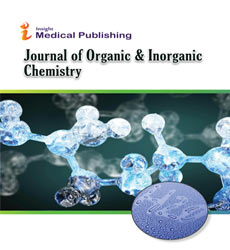Ultrasound Assurance of Green Solvents in Strong and Fluid
Meera Xin
Department of Green Chemistry, Concordia University, Quebec, Canada
Published Date: 2023-12-18DOI10.36648/2472-1123.9.4.69
Meera Xin*
Department of Green Chemistry, Concordia University, Quebec, Canada
- *Corresponding Author:
- Meera Xin
Department of Green Chemistry,
Concordia University, Quebec,
Canada,
E-mail: Xin_M@gmail.com
Received date: November 17, 2023, Manuscript No. IPJOIC-23-18360; Editor assigned date: November 20, 2023, PreQC No. IPJOIC-23-18360 (PQ); Reviewed date: December 04, 2023, QC No. IPJOIC-23-18360; Revised date: December 11, 2023, Manuscript No. IPJOIC-23-18360 (R); Published date: December 18, 2023, DOI: 10.36648/2472-1123.9.4.69
Citation: Xin M (2023) Ultrasound Assurance of Green Solvents in Strong and Fluid. J Org Inorg Chem Vol.9 No.4: 69.
Description
Ultrasound-helped extraction is a typical strategy for the extraction of natural pollutants from strong examples because of its simplicity of utilization to various lattices and the large number of solvents that can be utilized. For liquid samples, numerous methods have combined sonication and micro extraction techniques in recent years. Due to the negligible vapour pressure of these solvents, there is an increasing interest in reducing the use of traditional organic solvents or replacing them with other less toxic solvents like ionic liquids. Be that as it may, these solvents are not completely green because of unfortunate biodegradability and a harmfulness to oceanic life. Because of the developing interest in the purported "Green Science", the utilization of additional harmless to the ecosystem solvents, like profound eutectic solvents, or novel sorbents, for example, attractive nanoparticles, has been noticed for the extraction of natural impurities.
Green Solvents
Water is certainly not a natural dissolvable in light of the fact that it contains no carbon molecules and the primary green dissolvable rings a bell while considering dissolvable solute blends. Water is a polar protic dissolvable thanks to its compound construction, non-harmful and inexhaustible. Ions and proteins, for instance, dissolve in water in living things. It is the least expensive and generally bountiful dissolvable for an enormous scope of responses and cycles in modern science. There are situations where conventional natural solvents can be supplanted by fluid preparations. Water-based coatings have generally traded petrol based paints for the development business. Be that as it may, customary dissolvable based enemy of erosion paints stay the most utilized today. A few substances that happen in the gas stage at encompassing temperature and strain can go about as solvents whenever warmed to temperatures and tensions over their basic worth. Here the gas and fluid states exist in a solitary stage with properties transitional among fluid and gas, including the portability of gas and the dissolving force of fluid: A supercritical liquid. At the point when ultrasonic energy is sent through a medium, different physical and substance peculiarities are liable for the ultrasonic impact. Ultrasonic energy makes an unsettling influence that, when rehashed occasionally, causes patterns of extension and pressure in the particles of the medium, with bubbles framing and falling. Acoustic cavitation is the super main thrust behind the extraction impacts of ultrasound.
Ultrasound Assurance
This peculiarity upgrades the entrance of the dissolvable into the grid, as the collapse of the cavitation bubbles makes temperature and strain changes that increment the mass exchange of the analytes to the dissolvable, accordingly working with the recuperation of the analyte. The extraction procedure can be carried out using a probe or an ultrasonic water bath. Ultrasonic tests are more remarkable frameworks than the ultrasonic water shower since they have a higher power and are submerged in the example, so the energy gave is moved in a little region of the example. This improves the cavitation impact, permitting more limited extraction times. However, the most common source of ultrasonic energy for the extraction process is the ultrasonic water bath. This is on the grounds that it is a modest and regularly involved piece of hardware in example readiness research facilities and it effectively permits the synchronous extraction of numerous examples. Notwithstanding, ultrasonic shower extraction ordinarily requires longer extraction times and more than one cycle than ultrasonic test extraction. SCW is utilized as a response medium, particularly in oxidation processes for the obliteration of poisonous substances like those tracked down in modern watery effluents. The utilization of supercritical water has two primary specialized difficulties, to be specific consumption and salt testimony. At the point when a critical expansion in the use of ultrasound coupled to micro extraction strategies was noticed for the extraction of natural impurities from fluid examples.
Open Access Journals
- Aquaculture & Veterinary Science
- Chemistry & Chemical Sciences
- Clinical Sciences
- Engineering
- General Science
- Genetics & Molecular Biology
- Health Care & Nursing
- Immunology & Microbiology
- Materials Science
- Mathematics & Physics
- Medical Sciences
- Neurology & Psychiatry
- Oncology & Cancer Science
- Pharmaceutical Sciences
